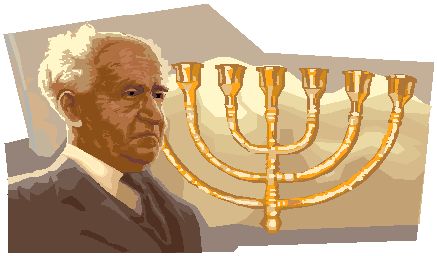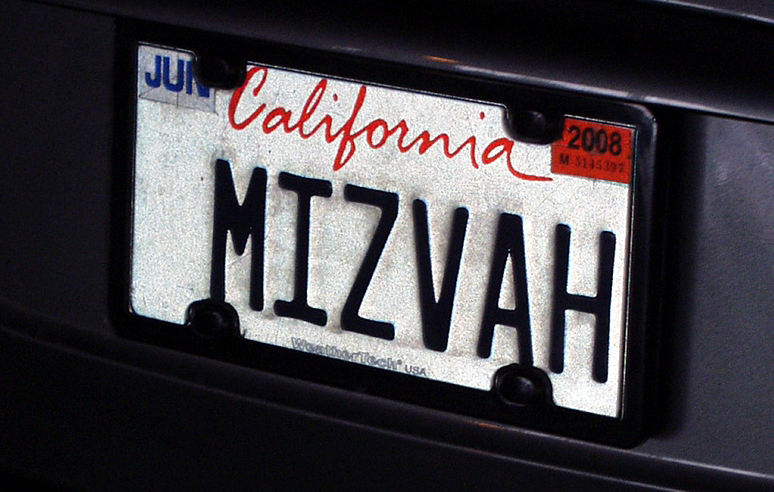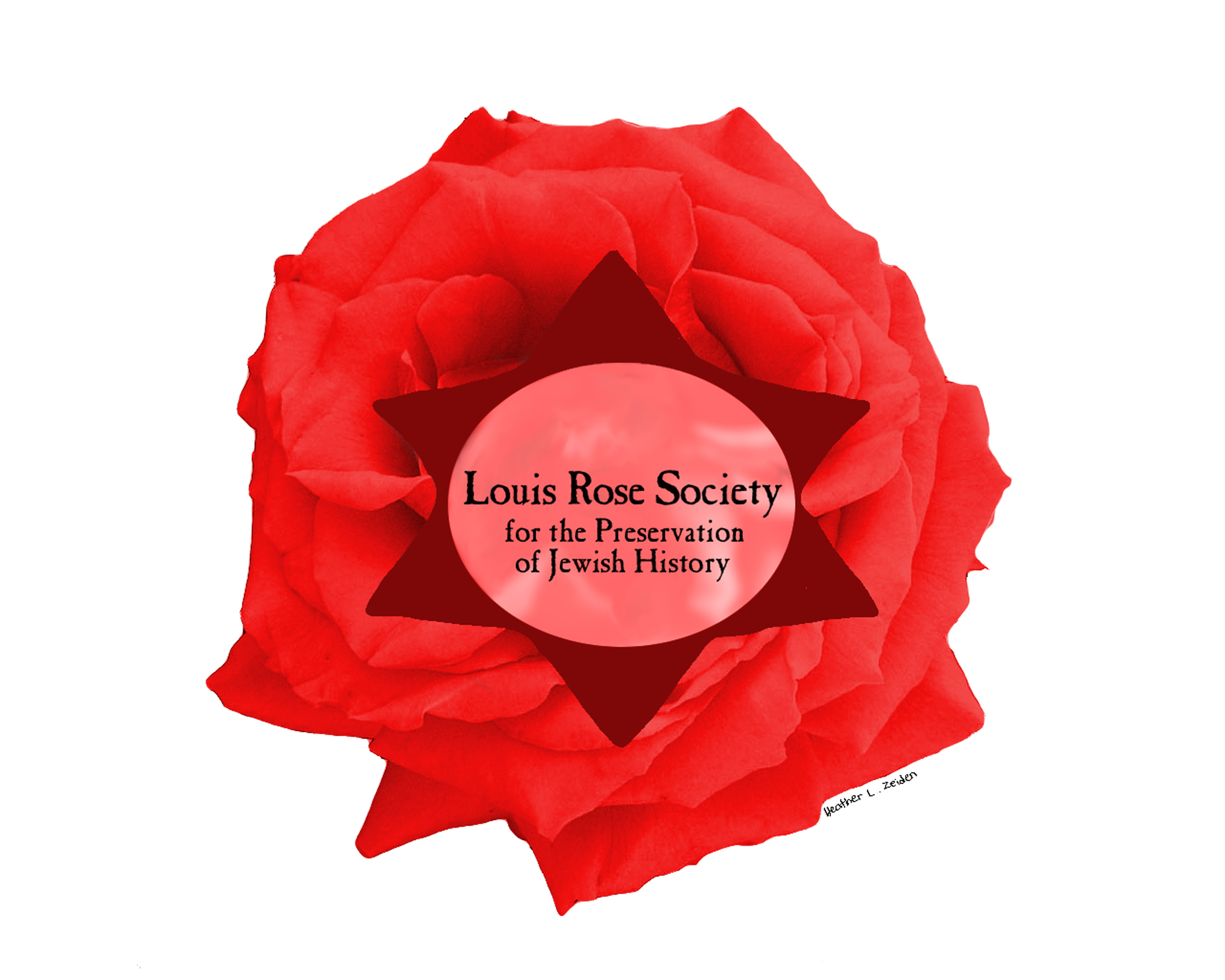Two SDSU units, Peres Peace Center aid
Arab-Israeli-European crop production
SAN DIEGO —Sanford Ehrlich, QUALCOMM Executive Director
of the Entrepreneurial Management Center at San Diego State University, is
collaborating with
The Peres Center for Peace
and
The Fred J. Hansen
Institute for World Peace on a cross-border peace-building
program in the Middle East.
Dr. Ehrlich is working with groups consisting of both Arabs and Israelis on
entrepreneurial methods of commercializing food products from the region.
Participants previously met in 2006 in Tel Aviv, Israel and Cairo, Egypt.
Future projects for the participants include market surveys by research
teams of university students for food product introduction to European,
Western, and Gulf markets, as well as training in marketing, market entry,
and product innovation. Through research and training, the project aims to
also foster peace, understanding, and friendship.
Based on
the success of the red palm weevil project, which
significantly decreased the spread of one of the most damaging pests
facing date palms in the region, the Peres Center launched the "Integrated
Crop Management" (ICM) program, to promote a comprehensive approach to crop
management and pest control. The program now engages representatives from
Israel, the Palestinian Authority, Egypt, Jordan, Morocco, Tunisia, Cyprus,
Turkey, Greece, Italy, Spain, France and Malta, thereby benefiting
agricultural sectors of the Middle East, Mediterranean region and North
Africa.
ICM is an approach which
examines the entire crop growth, harvest, and post-harvest care process, to
enhance the quality of agricultural output
in the region, and emphasize environmentally friendly practices. The program
encompasses elements such as improvement of crop features, production
(including improved irrigation and fertilization methods), pest control,
post-harvest care, marketing strategies and more, with a view to decreasing
negative environmental impact.
Within the framework of
this project, various workshops and
training seminars have been held. In November 2004, the
inaugural
ICM workshop
was held in Israel,
followed by a
workshop on Date Palm ICM
which took place in Israel in May 2006. A large-scale
Marketing and Product
Development workshop was held in Egypt in November 2006.
Moreover, in March 2007, a joint Egyptian-Israeli led
Training Course
on the Red Palm Weevil was held.
Numerous letters of support
for this program have been received by the Peres Center, including from
heads of state across the Mediterranean
and Middle East regions, respective Ministers of Agriculture, agricultural
bodies (including from the FAO and agricultural branch of the EU), as well
as from prominent individuals.
The Peres Center is
partnering with the Fred J. Hansen Institute for
World Peace of the San Diego State University Foundation to deliver
this program. Valuable support has also been received from Syngenta
(previously Novartis).
The requested article
above was
based on material from SDSU's Entrepreneurial Management Center, SDSU
Foundation's Hansen Institute for World Peace, and the Peres Peace Center in
Israel.
------------------------------------------------------------------------------------0
 Jews
in the News
------------------------------------------------------------- Jews
in the News
-------------------------------------------------------------
News spotters: Dan Brin in Los Angeles, Donald H.
Harrison in San Diego. To see a
source story click on the link within the
respective paragraph. If you spot a Jewish-interest
story in your
favorite publication,
please send us the link.
_______________________________________________________________________
*The
widening probe of Congress, with convicted lobbyist Jack
Abramoff telling the FBI most or all of what he knows, has prompted
the FBI to ask Republican Rep. Tom Feeney of Florida to provide more details
about his 2003 golfing trip to Scotland. Abramoff has been
"singing" about congressional misdeeds while awaiting sentencing on his
conviction of defrauding Indian casinos. Greg Gordon of MCT News Service has
the
story in today's San Diego Union-Tribune.
*The Southern Poverty Law Center is urging California State University
at Long Beach to probe the writings of Prof. Kevin MacDonald, a psychology
professor whose views on Jews are widely quoted on
anti-Semitic websites The story by Louis Sahagun is in today's
Los Angeles Times.
*Allegations of anti-Semitism at a fire station in the Fairfax area of Los
Angeles prompted Acting Los Angeles Fire Chief Douglas L. Barry
to quickly order an
investigation. The
story by Nancy Wride is in today's Los Angeles Times.
*U.S. Senator Barbara Boxer (D-Calif.) chided the administrator of
the Environmental Protection Agency, Stephen L. Johnson, for not doing more
to curb greenhouse gasses. The
story by Richard Simon is in The Los Angeles Times.
*Eli Broad has joined Bill Gates in a political initiative to
heighten awareness of the importance of education as a national priority.
The two will sponsor commercials and other materials in an "Ed in '08"
campaign
in an effort to force candidates to take positions on merit pay for teachers
and other educational issues. The
story by David M.
Herszenhorn of the New York Times News Service appears in today's San
Diego Union-Tribune.
*In response to a barrage of rockets fired from the Gaza Strip against
Israel and declarations by Hamas that the "cease fire" is over, Miri
Eisin, spokeswoman for Israel's Prime Minister Ehud Olmert
declared inscrutably: "We reserve our right to respond and to defend our
citizens at any time." Isabel Kershner of the New York Times News Service
had the
story appearing in today's San Diego Union-Tribune.
*A bill by California Assemblyman Lloyd Levine (D-Van
Nuys)
mandating neutering for most pets has cleared another hurdle in the
Legislature. The
story is included in the regional roundup of today's
San Diego Union-Tribune.
*The Los Angeles Times has thrown its
editorial weight behind efforts by Assemblyman Mike Feuer and Los
Angeles City Councilman Jack Weiss to force the California Department
of Transportation to clean up fire-prone weeds along the freeways.
*To paraphrase the old commercial, when Michael Milken speaks, people
listen...Not only that but they're willing to pay quite a bit of money to
hobnob with the former junk bond king and his high-powered friends from the
worlds of finance, politics and entertainment. Evelyn Iritani has the
story in today's Los Angeles Times.
*Isaac N. Pessah, director of the
Center for Children's Environmental Health and Disease
Prevention at the University of California at Davis, says research is
indicating a link between PCB (polychlorinated biphenyls) and autism.
The
story by Maria Cone is in today's Los Angeles Times.
*Questioning by U.S. Rep. Adam Schiff (D-Los Angeles) of Secretary
of State Condoleeza Rice over why the U.S. does not acknowledge the genocide
committed by Turks against the Armenians in 1915 is quoted approvingly in a
guest
column by Robert Deranian, principal of San
Diego's Armenian school, in today's San Diego Union-Tribune.
*Record producer Phil Spector's defense attorney, Bruce Cutler,
is a barrel-chested New Yorker with a gruff exterior and a vocabulary that
Roget himself might admire. Matt Krasnowski of the Copley News Service tells
the
story in today's San Diego Union-Tribune.
*The battle raging over whether World Bank President Paul Wolfowitz
should be dismissed is not only over alleged favoritism toward his
girlfriend, but also over policies that have failed to help the world's
developing nations. A guest
column by Mark Weisbrot appears in today's San Diego Union-Tribune.
.Advertisement:.J

---------------------------------------------------------------------------------------------
The Jewish Grapevine

CAMPUS WHIRL—San Diego State University's History Department
wraps up its "History Through Film" tomorrow (Thursday) night at
7 p.m. in the SDSU Little Theatre with the showing of Tim Blake Nelson's
The Grey Zone. The film, according to a departmental circular,
ponders "the 'choiceless choices' faced by the Hungarian Jews of the Twelfth
Sonderkommando unit, who could delay their own deaths by helping the Germans
escort other Jewish people into the gas chambers." Members of
the Sonderkommando unit for performing this duty were given clean
sheets, extra food, cigarettes and an extra four months of life. With the
end of the war obviously drawing closer, four months might mean
survival. Would you refuse this opportunity?" SDSU History Prof.
Lawrence Baron, who wrote a highly regarded book on Holocaust
films, will lead the discussion.
CYBER TOURISM—Hillel Mazansky, who keeps an ever-vigilant eye
on the Internet looking for good reading, found a
slide
presentation in Power Point on the synagogues of Slovakia by Guy Shachar.
That
sounds like Johnny Mathis singing Kol Nidre in the background.
 JEWISH
LICENSE PLATES—Melanie Rubin is still the undisputed champion of
finding personalized license plates with a Jewish tam, but editor Donald
H. Harrison spotted one that could be an inspiration for all of us—Mizvah
(Heb: Commandment), a word that has come into general Jewish usage as a
"good deed." For more plates in our growing collection,
follow this
link. JEWISH
LICENSE PLATES—Melanie Rubin is still the undisputed champion of
finding personalized license plates with a Jewish tam, but editor Donald
H. Harrison spotted one that could be an inspiration for all of us—Mizvah
(Heb: Commandment), a word that has come into general Jewish usage as a
"good deed." For more plates in our growing collection,
follow this
link.
Scholar outlines debate on
Crypto-Jews
Editor’s note: With the
Society for Crypto-Judaic Studies planning to hold its 17th annual
conference Aug. 5-7 in Albuquerque, Dr. Fred Reiss of Winchester, CA.,
provides us with a review of Stanley Hordes’ book To
the End of the Earth: A History of the Crypto-Jews of New Mexico
(New York: Columbia University Press, 2005) and recounts some of the
arguments made by Professor Judith Neulander of Case Western Reserve
University questioning the validity of the notion that there are Crypto-Jews
By Fred Reiss, Ed.D
WINCHESTER, Ca—Shortly
after the city of Grenada, the last Muslim stronghold on Spanish soil, fell
on January 2, 1492, Fernando and Isabella, under pressure from the powerful
Catholic Church, ordered the Spanish Jewish community to convert or leave
the country within four months. Although they had more than 800 years of
peaceful coexistence with their neighbors, the edict from the monarchy left
no choice but for Jews to decide between giving up the religion of their
ancestors, and permanently leaving their country.
Some felt that it was better to continue living as Jews, even if it meant
giving up everything, and starting over elsewhere. The exiles left Spain by
August 2, the same day that Columbus set sail from Spain on a voyage that
lead to his “discovery of America.” Other Jews believed that converting to
Catholicism was a small price to pay to remain in the country of their
families and associates, to maintain their livelihoods and to keep their
lifestyles. They converted and followed the tenants of their new faith.
However, an unexpected group emerged from these conversos. They were
the ones who converted, but secretly lived their lives as Jews. These secret
or crypto-Jews avowed Catholicism in public, but clandestinely followed the
dietary laws, prepared for and rested on the Sabbath Day, conducted
services, and observed the Jewish holidays.
Author Stanley M. Hordes would have us believe that practicing these illegal
rituals and observances can be kept as family secrets for more than 500
years, even though, as time passed, the practitioners didn’t know why they
followed strange customs. Researcher and folklorist Judith S. Neulander
argues that crypto-Jews are an illusion.
The book, To the End of the Earth: A History of the Crypto-Jews of New
Mexico, covers, in detail, the time from the expulsion to the
twenty-first century. About half of Spain’s Jews chose to leave and half
chose to stay. Most of the exiles fled across the border to Portugal, while
others left for Western Europe, Morocco, and lands under the control of the
Ottoman Empire. The families who converted, and at least nominally followed
Christianity, were assimilated within a few generations. The crypto-Jews
practiced the faith of their fathers at great personal risk since Judaism
was banned from the country. They were persecuted by the Holy Office of the
Inquisition for religious relapse. When found guilty, the punishment ranged
from atonement and penitence to death by fire in a public auto de fé.
The Jews who migrated to Portugal only postponed their fate. Within four
years King Manoel I issued his own edict of expulsion. However, he
recognized the value of having a middle class in his country, so he closed
the ports, ordered the Jews gathered in one place, and baptized them en
masse. The Jews remained in Portugal, and because of their already
strong religious beliefs, many became crypto-Jews. In the end, the fate of
the crypto-Jews of Portugal was no better than those remaining in Spain,
since Portuguese ancestry and crypto-Judaism were virtually synonymous to
the clergy of the Holy Office of the Inquisition in New Spain during most of
the sixteenth and first half of the seventeenth centuries.
Hordes tells us about some of the secret Jews who joined in the westward
expeditions of these two countries. Sometime during the early sixteenth
century, Spain founded Mexico City and Lima. Not long after, the Holy Office
of the Inquisition established tribunals there, providing motivation for
conversos to migrate away from these metropolitan centers; eventually
leading to the founding of a settlement in what is now New Mexico.
Using documents from the Inquisition, along with migration, trade, and
settlement patterns of the emigrants, Hordes informs us that Hernando
Alonso, who accompanied explorer Pánfilo de Narváez in his expedition
against Cortés, was one of the first individuals required to do penance by
the Inquisition in Mexico for the crime of judaizante, practicing
Judaism, in 1528. Hordes believes that such things as the rise of a
converso middle class, which threatened the Old Christians, and the
Protestant Reformation created a new spirit of church vigilance that spilled
over into the New World.
To the End of the Earth: A History of the Crypto-Jews of New Mexico
is a scholarly book in which history and cultural identity theories are
intertwined. To obtain information on crypto-Jews, the author performed
detective-like investigations to ferret out details of a group of people who
wanted to remain anonymous. To make matters worse, the Pueblo Indian Revolt
of 1680, which drove out the Europeans from New Spain for thirteen years,
led to the destruction of nearly all the pertinent documents. Yet, Hordes
ably constructs the activities of important and wealthy individuals who
helped shaped the character of New Spain. He tells us of the power struggle
between the clergy and the civil government, and the involvement of the
conversos in the colony, particularly through crypto-Jew Juan de Oñate,
Governor of the first permanent European settlement in New Mexico, called
San Gabriel del Yunque, which he founded in 1598.
After considering the establishment of San Gabriel del Yunque, Hordes
focuses his attention on New Mexican conversos and their activities.
Examining records from the Mexican Inquisition’s concern for limpieza de
sangre (blood purity), immigration and birth records, endogamous
marriage patterns, and typical Jewish professions, he is able to shed a
great deal of light on who most likely was a New Mexican crypto-Jew. By
deduction and inference, Hordes relates the origins of many crypto-Jewish
families and their histories in the New Mexico, as well as recounts the
inquisitorial persecutions of a number of them, including Bernardo López de
Mendizábal and Doña Teresa de Aguilera Y Roche, during the 1660s.
His research informs us that crypto-Jews played a continuous role in the
life of New Mexico up to its conquest by the United States in 1846. For
example, after the reconquest of New Mexico from the Pueblo Indians, there
was a new spirit of cooperation between the Spanish church and the
Viceroyalty of New Spain, particularly because both sides perceived the very
real threat of attack from the nomadic Indian tribes of the southwest, such
as the Apache, Comanche, and Navajo nations. Yet, understanding such thing
as who the crypto-Jews were, what role they played between the church and
state, and how they interacted with the Indians during this period are
rendered more difficult because of the lull in New Mexican inquisitional
activities. However, Hordes makes great strides in coming to some tentative
answers by examining the lives of descendents of the pre-revolt conversos
who returned to New Mexico, and the ancestors of nine interviewees who, in
the late twentieth century, either asserted or demonstrated that they are
crypto-Jews. He concludes that there is overlap between the two groups as
shown in mercantile occupations, inventory records, and fragmentary remarks
in church documents.
With the conquest of New Mexico by the United States, all legal barriers to
practicing Judaism were gone, and so the absence of records, once again,
becomes a barrier to deciding if crypto-Jews exist today, and if so, who are
they? Hordes asserts that one would not expect a family that shows latent
traces of Jewish practices after 500 years, to abandon its core-Christian
beliefs. Yet, might not this family give up Catholicism, a religion that
caused them a great deal of anguish, for Protestantism after the American
conquest? To find the answers, he searches records of conversion, looking
for Jewish biblical first names among the converted. He examines records of
circumcision, the observations of nineteenth century southwestern writer,
Mary Austin, who noted the presence of conversos in her midst, and
the assimilation of Hispano communities into the Anglo-American culture.
Hordes concludes that there are Christian people of Spanish descent who
observe Jewish customs and ceremonies at the dawn of the twenty-first
century, and that they are descendents of fifteenth century Jews who were
forcibly converted to Catholicism.
He spends two chapters telling of the research path that led from hypothesis
to conclusion, and within them acknowledges the dissident voice of Judith
Neulander, who argues that crypto-Jews do not exist. Indeed, she maintains
that this notion is based on unfounded beliefs about the cultural past. She
dismisses the Jewish-like customs celebrated by members of the Hispano
community, and that others conclude are suggestive of crypto-Judaism, as
irrelevant or attributable to other causes.
In one example, she asserts that observing the religious dietary laws was
neither practiced nor valued by the Jewish exiles in 1492; rather the method
of killing animals similar to the way the Jewish dietary laws require was a
common practice among Hispanos in New Mexico. She states that Jews drain the
blood of animals to avoid consuming it, while Hispanos drain the blood in
order to consume it. As a second example, the crypto-Jews of New Mexico use
a four-sided gambling top, called a pon y saca (put and take), which
Jews will immediately associate with the game of dreidle, played
during the holiday of Chanukah. Neulander points to authorities who call the
game a universal cultural phenomenon. The same argument is raised about the
use by present-day crypto-Jews of a six-pointed Star of David and Hebrew
letters associated with the World-to-Come on headstones found in New Mexican
cemeteries. Finally, in an argument that raises Neulander’s ire, Hordes
draws on biology, and notes a possible connection between pemphigus
vulgaris, a rare autoimmune skin disease of European Jews and the
Hispano community. In a 2006 paper, Neulander questions the whole concept of
an ethnic disease.
Hordes argues in favor of 500 years of the cultural transmission of symbols
and practices through families on both sides of the Atlantic. Neulander
disputes this, saying that use of these symbols appeared in the Hispano
community with the growth of Hispano Protestantism in the early twentieth
century. Although personal recollections can be faulty and the historical
record sparse, Hordes builds a compelling case that can not be easily
dismissed. But the jury is out and more research needs to be done. Perhaps
some new answers will emerge from the
up coming 17th annual conference on Crypto-Judaism, which will be held in
Albuquerque, NM, this August. In the meantime, it’s nice to believe.
Dr. Fred Reiss is a
retired public and Hebrew school teacher and administrator. He is the author
of The Standard Guide to the Jewish and Civil Calendars and
Public Education in Camden, NJ: From Inception to Integration. His latest
book, Ancient Secrets of Creation: Sepher Yetzira, the Book that Started
Kabbalah, Explained, will be published later this year.
|


